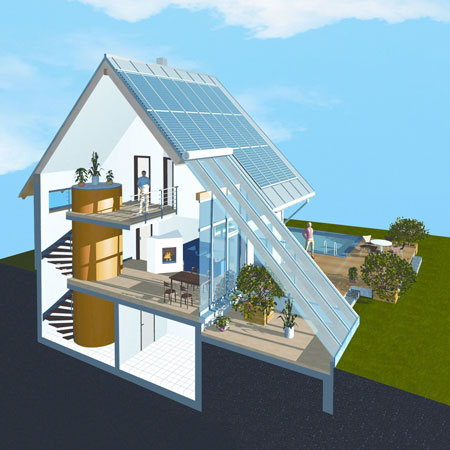| Aug 30, 2016 |
Solar houses scientifically evaluated
|
|
(Nanowerk News) According to the current German Energy Savings Ordinance, new residential buildings are to require one quarter less primary energy. Solar houses with large collector surface areas meet this requirement. In these well-insulated buildings, solar energy systems cover at least 50 per cent of the heat demand. The BINE Projektinfo brochure 'Assessing solar houses in energy and economic terms' (pdf) details the costs and energy requirements of the various solar house concepts.
|
 |
| Diagram of a solar house. (Image: Sonnenhaus-Institut e.V.)
|
|
Primary energy demand and costs in comparison
|
|
In order to scientifically evaluate the buildings, the scientists developed a new simulation method in the research project HeizSolar. With this new method, experts can analyse different solar house constellations in terms of primary energy demand and costs. For example, the researchers varied the solar savings fraction between 50 and 100 per cent, and combined the data with different efficiency house standards. They also compared the solar house concept with other low-carbon heat supply concepts, such as using pellets or logs to meet heating requirements.
|
|
The foundation for the development of the simulation method was formed by evaluations of three multi-family and six single-family homes. These conceptually different solar houses were measured throughout several heating seasons. Based on the monitoring results and the gained operational experience, the scientists then derived optimisation suggestions for the collector layouts and the storage technologies.
|
|
The research project HeizSolar was carried out under the leadership of the Fraunhofer Institute for Solar Energy Systems. Participating institutes included Sonnenhaus-Institut, the Ilmenau University of Technology, and Solar- und Wärmetechnik Stuttgart.
|

